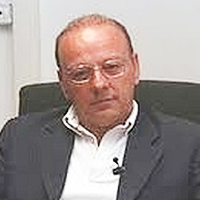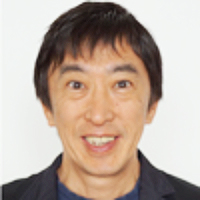FITT-CORRECT: Updated dynamic and evidence-based principle of exercise prescription
Published on: 15th February, 2021
OCLC Number/Unique Identifier: 9038777023
Objective: The FITT (Frequency, Intensity, Time, and Type) principle is an effective foundation in EP. However, the CORRECT components; C–Combination of interventions, O–Order of the Interventions, R–Repetitions, R–Rest period between sets and between sessions, E–Exercise at home, C–Cognitive domain, T–Total dose and re-evaluation plans, should be considered. The purpose of this paper was to describe the updated dynamic and evidence based FITT-CORRECT principle of EP and demonstrates its application using a case study.
Results: Literatures, related to EP, clinical reasoning and clinical decision-making, were critically reviewed. Established evidence is summarized to describe an updated dynamic and evidence-based principle of EP. The gaps within the FITT and other related principles of EP are addressed. The FITT-CORRECT principle was introduced and an effective outcome of the updated principle was demonstrated using a case study. The FITT-CORRECT principle integrates many components that are missing in the FITT and other related EP principles. Based on the reported case study, the FITT-CORRECT principle of EP should optimize patients’ intervention outcomes. Physiotherapists can potentially improve their EP by utilizing the FITT-CORRECT in clinical practice.
A forensic treatment-monitoring study of an adult with attention-deficit disorder with hyperactivity and substance use disorder
Published on: 27th June, 2019
OCLC Number/Unique Identifier: 8185511586
Background: The patient in this study experienced a childhood marked by conflicts within the family, physical abuse, frequent changes of school settings, truancy, and unspecified learning disabilities. After leaving school at age 17, she was chronically depressed, had anger attacks, lacked motivation, refused psychological assistance, and had problems finding work. At age 30, this culminated in an aggravated assault of a female in an urban public space, after which she was referred to the criminal courts. She was granted probation and hospitalized for psychiatric evaluation with follow-up, outpatient psychiatric treatment.
Aim: To present outcomes of longitudinal monitoring of methylphenidate effects on cognition and self-regulation during treatment of attention-deficit disorder with hyperactivity and substance use.
Methods: During more than a year of treatment, psychiatric interviews and norm-referenced assessments of processing-speed and cognitive overhead monitored changes in cognition and substance use.
Results: At baseline, processing-speed measures of reactive and active attention were within the average-normal range, whereas cognitive overhead/shift cost was in the atypically high range, suggestive of ADHD symptomatology. The patient engaged in daily excessive use of cannabis, amphetamines, and other illegal substances. At the end of treatment, cognitive speed was increased and cognitive overhead normalized. With reductions in ADHD symptomatology, the patient used small amounts of cannabis during weekends and showed improved self-regulation, and legal restrictions were discontinued.
Conclusion: This forensic case provided the attending psychiatrist with clinical insights that lead to further research of methylphenidate effects on adults with ADHD and ADHD and comorbid SUD.
Training networks preparation for the era of COVID-19
Published on: 4th April, 2023
In administrative and economic science, factor analysis models are essential for their explanatory capacity of institutional responses to risk events. The objective of this document was to contrast a model that explains the emergence of corporate governance dimensions in the face of the pandemic. An exploratory study was carried out based on a systematic review of the literature from 2020 to 2023, considering the search by keywords in Google scholar and Microsoft academic, as well as the judges from a public university in the center of Mexico. The results show that corporate identity explains the university’s response to the pandemic. In relation to the state of the art, the scope and limits of the model are discussed in other proposals.
“Maximum Preservation Radical Prostatectomy”: Oncological, functional and other contemporary aspects of Retzius Sparing Robotic Assisted Radical Prostatectomy
Published on: 30th April, 2020
OCLC Number/Unique Identifier: 8861737601
The surgical treatment of prostate cancer (PCa) had as its initial milestone the first prostatectomy, performed by H.H. Young at the Johns Hopkins Hospital, in 1904 [1], however, the procedure only reached a fundamental role after 1982, based on a better understanding and description of the male pelvic anatomy, by Walsh [2-6] and other [7-11]. Subsequently, minimally invasive approaches emerged: laparoscopic prostatectomy (1992) [12] and robot- assisted laparoscopic prostatectomy (RALP) (2000) [13], which modified and optimized the execution of key surgical steps of this procedure, such as bladder neck preservation, nerve-sparing dissection, and prostate apex management [14].
Educational strategy to increase knowledge and risk perception about sexually transmitted infection in polytechnic students
Published on: 19th March, 2020
OCLC Number/Unique Identifier: 8577723979
Introduction: The incidence of STI-HIV/AIDS is on the rise, making adolescents a vulnerable group at risk.
Objective: To increase the knowledge and perception of risk about STI-HIV/AIDS, through Educational Intervention in students of the Polytechnic Institute ¨Hermanos Gómez¨ of the Municipality San José de las Lajas, Mayabeque Province.
Method: Quasi-experimental study, intervention at the ¨Hermanos Gómez Polytechnic Institute, of the Municipality of San José de la Lajas, through affective, participatory, animation and reflection techniques, the universe being made up of 17 students aged 16-17 years of specialty in Industrial Chemistry, during the period from December 2014 to November 2015. The variables used were: knowledge about STI-HIV/AIDS and perception of risk towards said diseases.
Results: after the intervention, an increase in the level of knowledge of the main STIs in the study was evident: Syphilis, Condylomas, HIV/AIDS, Gonorrhea, Trichomonas, Candida Albicans and Herpes simplex, which were adequately identified by 60%; 71% recognized the routes of sexual transmission, 60% the typical clinical manifestations, an increase in the levels of knowledge about the use of condoms to prevent STIs, and in the same way the perception of risk in an 83% after the intervention.
Conclusion: After the intervention, there was an increase in knowledge of STIs, transmission routes, clinical manifestations, condom use, and risk perception.
Anti COVID-19 immunity developed as assessed in a community-based oncological center
Published on: 7th October, 2020
OCLC Number/Unique Identifier: 8861739910
Introduction: Serology (antibody) tests for the SARS-CoV-2 have been proposed as an instrument to inform health authorities about immunization during the COVID-19 pandemic. As there is a significant part of the population that may have some degree of immunity, it is of great interest to communicate the immunization results obtained in the first 500 healthcare workers (HCW), patients and relatives tested in a community-based Oncological Center.
Materials and methods: Between April 9th, 2020 and May 8th, 2020, a group of healthcare workers (HCW), their families, and general public who had had the COVID-19 or had been in close contact with confirmed cases of COVID-19 were screened for IgG SARS-CoV-2 antibodies. The tests were carried out in a rigorous manner, strictly following the guidelines approved by the Spanish Ministry of Health (Ministerio de Sanidad).
Results: The major objective of this study was to determine the proportion of asymptomatic infected individuals and those who had already secreted IgG against SARS-CoV-2 in our cancer treatment center or in the community of Barcelona. Patients were tested with PCR, Rapid diagnostic test (RDT) or enzyme-linked immunoabsorbent assay (ELISA). A total of 521 participants were tested, 206 with RDT and 315 with ELISA, 59 (11,32%) resulted positive to SARS-CoV-2.
Conclusion: RDT and ELISA proved to be effective and sensible enough to determine the extent of SARS-CoV-2 immunization in a community-based oncological center. The degree of immunization reached is nowadays far away from what can be considered desirable for a herd immunization.
Prediction of neonatal and maternal index based on development and population indicators: a global ecological study
Published on: 7th December, 2021
OCLC Number/Unique Identifier: 9359437629
Introduction: Although worldwide maternal and neonatal mortalities have decreased, but Achieving sustainable development goals remains an unfinished agenda and global challenge. This study aimed to predict neonatal and maternal index based on development and demographic indicators.Methods: In this ecologic study, the dependent variables were Maternal mortality ratio (MMR), Neonatal mortality rate (NMR), and Under 5 Mortality Rate (U5MR) and the independent variables were Gender gap index (GGI) and its four components, human development, life expectancy, total fertility rate, and population growth. Data conducted using international secondary data published data bases of health metrics from 2016 to 2018 in 149 countries from WHO (World Health Organization), World Economic Forum, UNICEF (United Nations Children's Fund), and UNDP (United Nations Development Programme). Data analysis was performed using correlation model in Stata version 14.1 software.Results: In this study, economic participation and total fertility rate are positively and educational attainment, Human Capital Index and life expectancy are negatively associated with MMR. Human Capital Index, Educational attainment, and Life expectancy are negatively associated with NMR. Economic participation and total fertility rate are positively and educational attainment, Human Capital Index and life expectancy are negatively associated with U5MR. Discussion: To reduce the maternal and neonatal mortality rate, it is important to pay attention to indirect causes such as equal conditions for men and women to demographic and population indices such as economic participation, educational attainment, Human Capital Index and life expectancy.
How and who can address sexual reproductive health rights in Tanzania
Published on: 25th April, 2023
Tanzania is allocated in the Eastern part of Africa and it is one among the seven countries that form East African Community (EAC). According to the recent 2022 National Census, Tanzania has a population of 61,741,120 of which 30,053,130 are men and 31,687,990 are women. Currently, the country is implementing Development Vision 2025 which identifies enabling environment essential for the nation to flourish economically, politically and socially.
Periocular capillary hemangioma treated with low dose oral propranolol - presentation and outcome of 30 patients
Published on: 31st December, 2021
OCLC Number/Unique Identifier: 9382537723
Purpose: To evaluate the presentation and outcome of periocular capillary hemangioma treated with low-dose oral propranolol.Method: Thirty cases of periocular capillary hemangioma prospectively studied from 1st June 2015 to 31st May 2017 who received oral propranolol on an outpatient basis. Hemangioma causing any threat to vision or disfigurement was included and age below 3 months and multiple lesions were excluded. Starting dose of propranolol was 1 mg/kg and increased to 2 mg/kg after 2 weeks as a maintenance dose. The tapering dose was 1 mg/kg of body weight before discontinuing the medication. Treatment was continued till the child is 1 year of age or no further change in color or size of the lesion in two successive follow-ups. Results: Presenting age was 6.36 ± 3.36 months (ranged 3–24 months) with female predominance (70%). In 86.6% of cases, the vision was Central Steady and Maintained and cycloplegic refraction showed marked astigmatism in 3 children which resolved after treatment. Forty-six percent of children showed color change as an initial response to treatment. Most children (33.3%) responded completely within 5 months after starting the treatment. One third patients (33.3%) showed 100% resolution, 50% showed 90% to 70% resolution. Pretreatment and post-treatment lesion size was1.60 ± 0.86 cm2 and 0.30 ± 0.40 cm2 respectively (p - value < 0.0005). None showed any significant adverse effect of oral propranolol.Conclusion: Low-dose oral propranolol is an effective and cost-effective treatment modality for periocular capillary hemangioma and is safe as an outpatient basis.
Laparoscopic staging of borderline ovarian tumours – Technique and results
Published on: 17th March, 2021
OCLC Number/Unique Identifier: 9023197038
Borderline Ovarian Tumors (BOT) tend to present more frequently nowadays, especially in younger women. Furthermore fertility preservation and laparoscopic management is often desired and therefore appropriate counselling is challenging and the treatment selection must be made on evidence based medicine.
Adnexal mass could be a random finding when a typical gynecologic examination is performed. The diagnostic algorithm for possible BOT is the same as for any ovarian tumor, but the treatment options and techniques may vary based on patient’s willing to preserve her fertility or not. Laparoscopic or laparotomy approach has similar results although intraoperative findings and frozen section may redirect the primary treatment planning.
When an initial conservative approach is chosen, a secondary approach including total hysterectomy and bilateral salpingo-oophorectomy with staging should be considered. Hence a full counselling is recommended before any primary approach.




